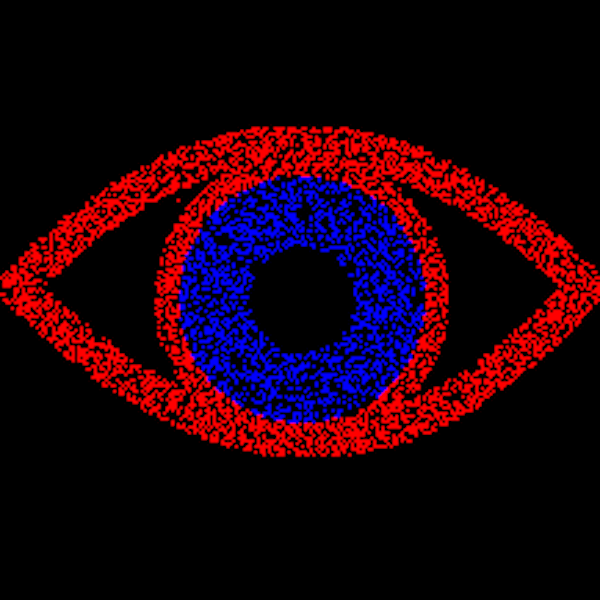**The Intriguing Phenomenon of Chromostereopsis: Delving into Perception**
Chromostereopsis is an intriguing optical illusion in which specific colors seem to occupy varying depths when observed together. While some observers may find nothing remarkable, others perceive a pronounced depth illusion when a blue iris is situated within a red eye, as illustrated in images by Tom Stafford.
### Grasping Chromostereopsis
For those who encounter this phenomenon, the blue and red shades might appear to exist at different depths, generating the illusion of motion under particular conditions. Modifying screen brightness, observing in low light, or blinking quickly can amplify this effect. Notably, the illusion’s strength and perception vary among individuals, often influenced by the color they view as closer—typically red, with blue seeming more distant.
### Chromostereopsis Compared to Traditional Stereo-Depth Illusions
In contrast to conventional stereo-depth illusions that require two distinct images or viewing methods like 3D movie glasses, chromostereopsis arises from a singular static image. This uniqueness challenges the notion of depth perception’s dependency on two separate images, as both eyes need to view the image together for the illusion to manifest. Testing this by closing one eye unveils the absence of the illusion, as monocular vision fails to provide the stereoscopic depth cues required for chromostereopsis.
### The Science Underlying Chromostereopsis
The principles of chromostereopsis are intricate and not fully comprehended. The effect likely originates from the varying focal points of red and blue light on the retina, due to their spectral separation. This difference might elucidate why glasses can sometimes enhance the effect. Additionally, luminance and background contrast contribute to the illusion’s emergence.
### Art and Chromostereopsis
Historically, the deliberate application of color, from stained glass to contemporary media, may have intuitively utilized this visual phenomenon. Examples include the vivid set designs of popular television shows that may unconsciously leverage this illusion for impactful visual effects.
### Concluding Thoughts
For individuals keen on a deeper investigation into optical phenomena, resources such as the “Mind Hacks” book, insights from Michael Bach, and academic articles offer further understanding of the science behind color and perception.
—
This correction, first published on May 18, 2022, clarifies that the colored part of the eye is the iris, not the pupil, which is the black center.
